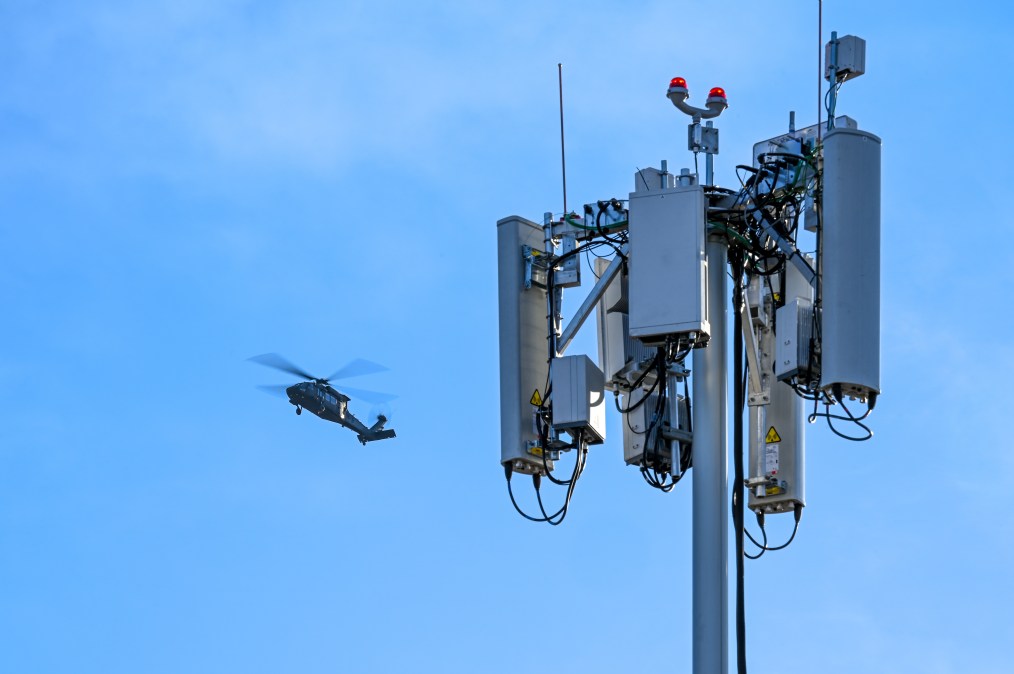Senators express concerns about national spectrum strategy’s impact on DOD

A trio of lawmakers from the Senate Armed Services Committee have written a letter to President Joe Biden asking the administration to incorporate more insights from the Pentagon as it begins to implement the National Spectrum Strategy.
The letter — signed by Sens. Deb Fischer, R-Neb., Mazie Hirono, D-Hawaii, and Angus King, I-Maine — outlines the legislators’ apprehensions over the possible repercussions if the Department of Defense is asked to vacate portions of the electromagnetic spectrum that are exclusively used for military operations. Notably, it questions a recent directive from the administration to conduct a second study of dynamic spectrum sharing options between the Pentagon and private sector.
“At this time, it would be counterproductive to initiate additional studies of the lower 3GHz Band,” the SASC members wrote in the missive published Wednesday. “We remain concerned that pursuing a policy of requiring the Department of Defense … to surrender its spectrum for non-Federal use would significantly harm DOD’s ability to carry out its missions, increase costs, and adversely affect our national security.”
The letter comes after the White House published its first-ever National Spectrum Strategy in November. The strategy established near- and long-term guidance that aims to modernize the United States’ spectrum usage for the benefit of both government users and the private sector.
Included in the administration’s wide-ranging list of action items is one that calls for an in-depth study of frequency bands that could be shared between the government and industry — including the 3.1-3.45 GHz S-band that the Pentagon uses to operate its radars, satellites, navigation equipment and more. The study will be conducted by the Pentagon’s Chief Information Office and the Department of Commerce’s National Telecommunications and Information Administration (NTIA).
However, as the senators point out in their letter, the Defense Department and NTIA recently completed an analysis on the impacts of sharing its spectrum band with public users. The 22-month-long, congressionally mandated study resulted in the Emerging Mid-Band Radar Spectrum Sharing (EMBRSS) feasibility assessment.
Although Biden’s strategy notes the Pentagon’s study determined that sharing its spectrum band with private users was possible if interference mitigation capabilities and coordination frameworks were established, it called for a follow-on study to “explore dynamic spectrum sharing and other opportunities for private-sector access in the band, while ensuring DoD and other Federal mission capabilities are preserved, with any necessary changes.”
In their letter, lawmakers emphasized that in order for the spectrum strategy to be successful, the White House must consult and adhere to the findings detailed in the EMBRSS report.
“We are concerned that the administration is moving forward with the National Spectrum Strategy without fully considering the recommendations of the EMBRSS report and the findings of its study on the lower 3 GHz Band,” they wrote. “Proceeding without appropriate input in advance of the National Spectrum Strategy’s implementation could lead to an approach that overrides congressional intent and is at odds with the practical realities and technical assessments the final report provides.”
They also stressed that even partially disregarding the EMBRSS report would negatively affect both government and private sector spectrum users.
Rapid innovations in 5G and other wireless technology have increased commercial demand for access to the electromagnetic spectrum. Industry is calling on the U.S. government to reallocate portions of the spectrum being used by government users — including the Defense Department’s band — for commercial use.
But Pentagon leaders assert that such a move would cost billions of dollars and take years to complete.
Meanwhile, lawmakers are asking for the EMBRSS report to be made available to the public — either partially or in full. The letter notes that Congress was told that the report would be published, but there’s been no progress in doing so since it was finished in September.
“The study and subsequent EMBRSS report provide meaningful input on how this band of spectrum can be shared with non-Federal users to maximize its value to the American people,” the senators wrote. “We encourage the swift public release of this report to better inform ongoing discussions on what frequencies and conditions DOD’s spectrum may be appropriately shared with non-Federal users.”
At press time, Pentagon officials have not responded to DefenseScoop’s inquiries regarding the status of publishing the EMBRSS report.



